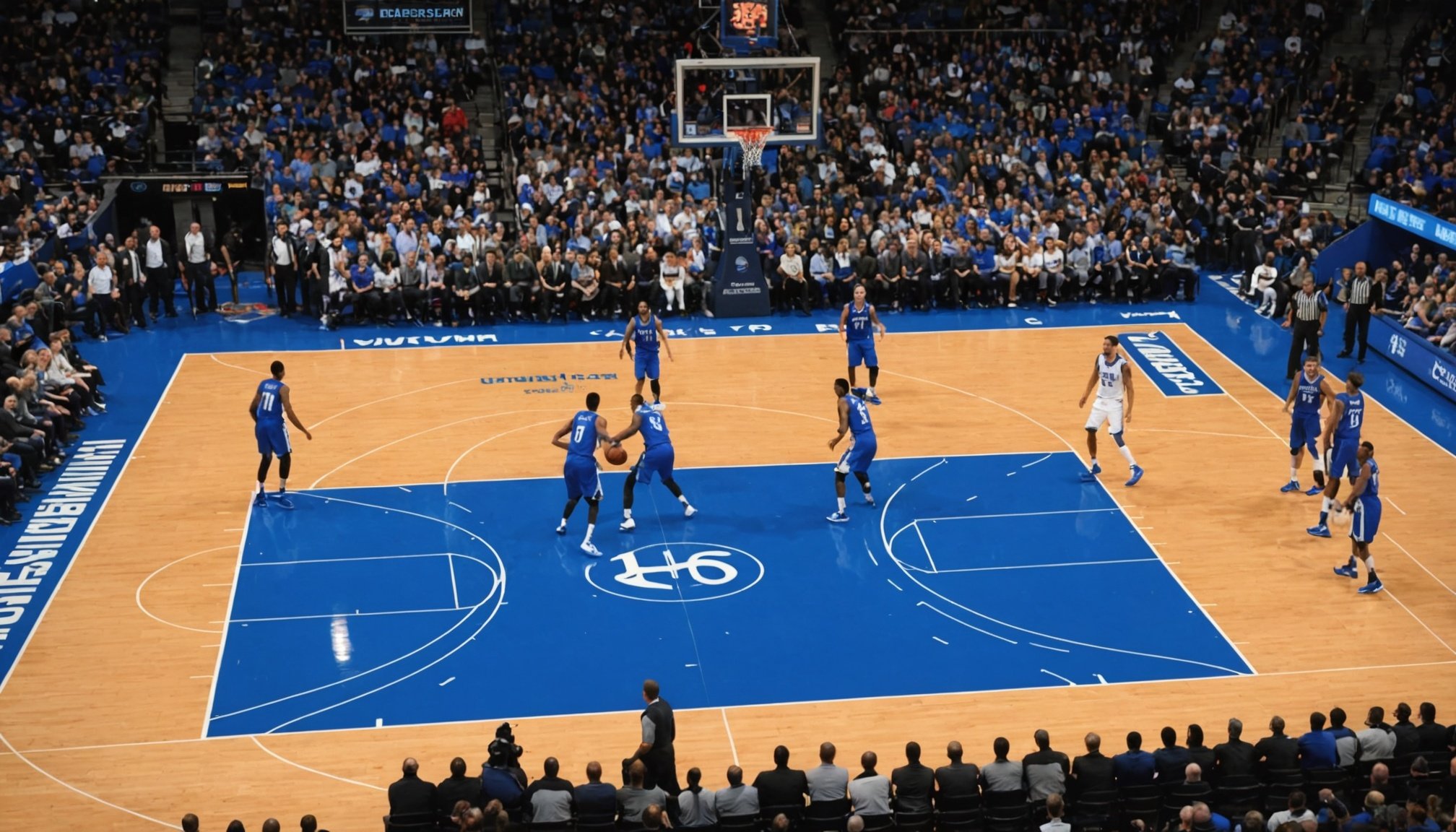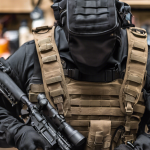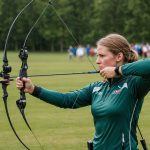Understanding Peripheral Vision in Basketball
Peripheral vision plays a crucial role in basketball performance, significantly influencing gameplay and decision-making on the court. Unlike central vision, which focuses on details directly in front of an individual, peripheral vision allows players to detect movements and changes in their surroundings without directly looking at them. This visual awareness is essential for players to anticipate opponents’ actions, locate teammates, and swiftly adapt to fast-paced game dynamics.
In a sport where split-second decisions can determine the outcome of a game, enhanced peripheral vision can provide an edge. On the court, effective utilization of peripheral vision enables players to maintain awareness of the basketball while simultaneously surveying teammates and opponents’ positions. This dual focus aids in making informed and quick decisions, such as passing, defending, or shooting. Being attuned to surroundings can help players react faster to sudden shifts, like interceptions or screens, that require immediate responses.
Also to discover : Boosting performance: essential tactics for uk basketball players to conquer mid-season challenges
Among elite players, the comparison of peripheral vision capabilities often illustrates differences in performance levels. Those with superior peripheral awareness can better predict opponent strategies, leading to more strategic positioning and advantageous plays. Therefore, honing peripheral vision can be just as vital as physical training for elevating overall basketball performance and achieving tactical proficiency on the court.
Core Techniques to Enhance Peripheral Vision
To enhance peripheral vision effectively, a combination of vision training techniques and basketball drills is essential for skill enhancement.
Also read : Enhancing court awareness: top strategies for uk basketball players to elevate spatial vision
Shadowing Drills
Shadowing drills are beneficial in training athletes to anticipate and react to their opponents’ movements without excessive focus. These drills typically involve players mirroring a partner’s subtle movements while maintaining awareness of other players on the court. This dual focus helps improve both peripheral vision and reaction speed.
Reaction Drills
Reaction drills are designed to sharpen quick decision-making by using visual stimuli. A common technique involves having players respond to coloured lights or hand signals while managing a basketball. This not only enhances peripheral awareness but also boosts agility and coordination.
Off-Court Exercises
Off-court exercises play a critical role in peripheral vision training. Incorporating activities such as juggling or using agility ladders can effectively improve peripheral capabilities. These exercises are versatile and can be adapted for various skill levels, ensuring that both beginners and advanced players receive adequate vision training.
- Combining drills with vision training can solidify core skills.
- Adapt drills to match skill levels for tailored training.
- Integrate vision training into practice to naturally enhance performance.
Practical Exercises for Game Scenarios
Developing game simulation exercises is crucial for enhancing decision-making skills and situational awareness in athletes. Effective coaching methods include designing scrimmages that encourage a broad perspective on the field, incorporating peripheral cues to build a player’s spatial understanding.
One approach is to construct scenarios that mimic real-game conditions. This can be achieved by creating dynamic drills where players must navigate crowded spaces, make split-second decisions, and adapt to unexpected changes. Emphasizing the importance of peripheral vision during these scrimmages helps players anticipate movements, enabling them to react more effectively during actual matches.
To reinforce these skills, coaches can implement various real-game scenarios in training sessions. Using diverse tactics such as small-sided games or time-constrained drills can help players hone their decision-making abilities under pressure. By recreating authentic game moments, athletes can better understand the pace and complexity of competition, improving their overall performance.
Coaches are advised to encourage awareness during play by offering immediate feedback and highlighting key observations. For instance, stopping a drill to point out a missed opportunity or commend a clever move helps players learn situational awareness through experience. Open discussions after exercises allow players to share insights, reinforcing the skills practiced in scrimmages.
The Science Behind Peripheral Vision
Understanding peripheral vision involves diving into the intricate neuroscience of visual processing. The brain processes peripheral visuals through a complex network where sensory input is distributed across the peripheral retina’s cone cells. This allows us to detect movement and shapes outside our direct line of sight, crucial for everyday tasks and certain sports like basketball.
How Peripheral Vision Works in Neuroscience
In the realm of neuroscience, peripheral vision is associated with quick responses to any unpredicted stimuli outside our focal point. This capability stems from the brain’s ability to simultaneously process multiple visual cues. The visual cortex, particularly, plays a significant role in interpreting these cues, ensuring that humans can navigate their environments efficiently.
Peripheral Vision in Basketball Training Science
Peripheral vision is a cornerstone of the science behind basketball training. Athletes often engage in exercises designed for vision training, which taps into sports psychology to improve their awareness and anticipation on the court. By honing this skill, players can enhance their gameplay, making split-second decisions based on peripheral information.
The Importance of Visual Attention
Practicing with a focus on visual attention extends beyond sight; it’s about training the brain to prioritize and respond to peripheral cues. Such routines not only aid in predicting opponents’ moves but also in maintaining a broader outlook, reducing instances of tunnel vision during high-stakes games. Implementing focused peripheral vision exercises hones cognitive flexibility, crucial for advanced gameplay strategies.
Integrating Vision Training into Team Practices
Incorporating vision training into team practices can be effectively achieved through structured team drills and collaborative exercises. Coaches should look for ways to blend visual skills into existing exercises, ensuring players can integrate these skills naturally. A seamless mix of practice integration helps athletes develop a keen sense of visual awareness without disrupting regular training routines.
Incorporating Team Drills
Introducing vision-specific drills can enhance players’ ability to process information quickly and make better decisions on the field. Drills that require players to react to stimuli, such as light signals or dynamic targets, can sharpen focus and improve reaction times. These drills are not only about speed but also promote effective eye coordination and spatial awareness.
Feedback Mechanisms
Feedback plays a crucial role in developing these skills. Coaches should utilize video analysis and real-time feedback tools to guide players on their visual performance. Using wearable technology or mobile apps, players can receive insights and corrections, allowing for immediate improvement. This can foster a culture of continuous learning and adaptability.
Assessing Improvement
To assess improvement, coaches can use performance metrics that gauge enhancements in visual skills. By tracking data like response times or accuracy rates, it becomes easier to measure progress. Encouraging open team communication helps players understand the importance of visual training, ultimately enhancing both individual and team performance.
Real-World Applications and Success Stories
Vision training has been a game-changer in basketball training, offering remarkable success stories in player development. One notable case is that of a professional player who significantly improved his court awareness and reaction time through intensive vision training. The player reported impressive improvements in his basketball training results, stating that his ability to anticipate opponent moves and execute strategies efficiently transformed his game.
Coaches, too, have shared enthusiastic testimonials on the effectiveness of these techniques. A well-known coach from a top basketball academy detailed how vision training bolstered the performance of his players, leading to consistent team victories. His testimony adds credence to the growing body of evidence supporting vision training as a critical component of modern basketball coaching strategies.
The long-term benefits observed underscore the enduring impact of these methods. Players not only experience immediate improvements in their games but also sustain these advances over time, which contributes to player development beyond physical training. Improved focus, faster decision-making, and enhanced strategic thinking are just a few long-term benefits cementing vision training as a cornerstone of basketball success. The amalgamation of these factors highlights the transformative potential embedded within effective vision training practices.











